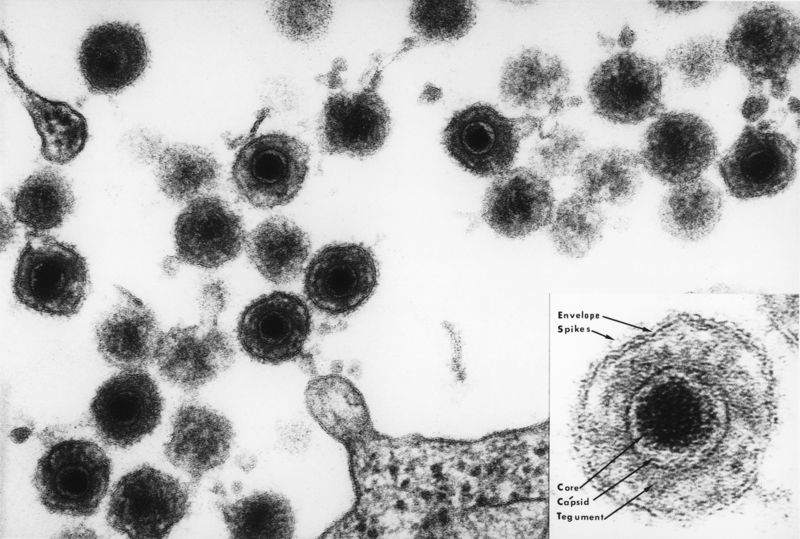Human T-lymphotropic virus
Articles that lack this notice, including many Eduzendium ones, welcome your collaboration! |
Classification
Higher order taxa
Viral Group: Group IV (ssRNA-RT)
Family: Retroviridae
Genus: Deltaretrovirus
Species: Simian T-lymphotropic virus
Species
Deltaretrovirus Simian T-lymphotropic virus 
Description and significance
Describe the appearance, habitat, etc. of the organism, and why it is important enough to have its genome sequenced. Describe how and where it was isolated. Include a picture or two (with sources) if you can find them.
Human T-lymphotropic virus was first discovered in Japan in 1977 as the first human retrovirus to be identified as such. It is thought to be the disease causing agent in several ailments. Paraparesis is one disease thought to be caused by the virus where an individual's lower extremities are impaired. The virus is also thought to be an oncovirus, a cancer causing viral agent. Leukemia, a cancer of bone marrow or blood cells, has been linked to T-lymphotropic virus.
Genome structure
Describe the size and content of the genome. How many chromosomes? Circular or linear? Other interesting features? What is known about its sequence? Does it have any plasmids? Are they important to the organism's lifestyle?
Cell structure and metabolism
Describe any interesting features and/or cell structures; how it gains energy; what important molecules it produces.
Ecology
Describe any interactions with other organisms (included eukaryotes), contributions to the environment, effect on environment, etc.
Pathology
How does this organism cause disease? Human, animal, plant hosts? Virulence factors, as well as patient symptoms.
Application to Biotechnology
Does this organism produce any useful compounds or enzymes? What are they and how are they used?
Current Research
Human T-lymphotropic virus type I infection. Human T-cell lymphotropic virus type I (HTLV-I) is the first human retrovirus to be associated with malignant disease--namely, adult T-cell leukaemia/lymphoma. HTLV-I has also been associated with several non-malignant conditions, notably the chronic neurodegenerative disorder, HTLV-I associated myelopathy (also known as tropical spastic paraparesis), infective dermatitis of children and uveitis. More recent evidence points to disease associations not previously linked to HTLV-I. Thus, the disease spectrum of HTLV-I is not fully known. HTLV-I has a worldwide distribution with major endemic foci in the Caribbean and southern Japan. The public health importance is confirmed by the major routes of transmission, which are mother-to-child, blood transfusion, and sexual activity. Unfortunately, no vaccine is available yet and there is no proven treatment for advanced HTLV-I disease. http://www.ncbi.nlm.nih.gov/pubmed/10371587
References
1. http://en.wikipedia.org/wiki/Human_T-lymphotropic_virus
2. http://www.medicalnewstoday.com/articles/95706.php
3.